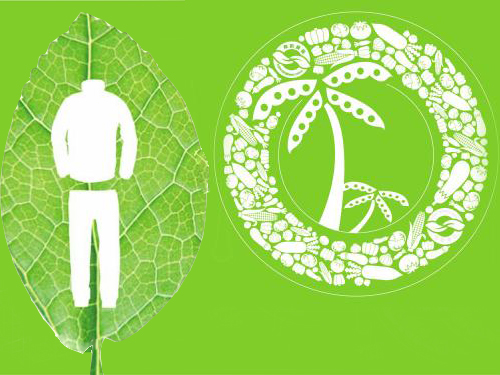Nine adults buy clothes without regard to low carbon
Belt buckle, Custom Zinc Alloy Belt Buckel for Awards / Recognition / Souvenirs, China Belt buckle Ningbo York Arts & Crafts Co.,Ltd , http://www.york-keychain.com Buying more polyester clothes increases carbon emissions by 47 kilograms, which is equivalent to the amount of carbon emitted by a private car driving 20 kilometers... Do you know? When we purchase new clothes, we have unknowingly increased carbon emissions. Yesterday, the newspaper's “low-carbon clothing†survey conducted jointly with Sohu.com revealed that nearly nine adults did not buy “low-carbon clothing†accounts. More than half of consumers did not believe that “low-carbon labels†were marked on clothing.
Buying more polyester clothes increases carbon emissions by 47 kilograms, which is equivalent to the amount of carbon emitted by a private car driving 20 kilometers... Do you know? When we purchase new clothes, we have unknowingly increased carbon emissions. Yesterday, the newspaper's “low-carbon clothing†survey conducted jointly with Sohu.com revealed that nearly nine adults did not buy “low-carbon clothing†accounts. More than half of consumers did not believe that “low-carbon labels†were marked on clothing.
A polyester garment with 47kg of carbon was used to “buy new clothes and increase carbon emissions!†The citizen Sun ** surprised when he answered the survey questions. Newly added a cotton T-shirt, you will have 6.4 kg of carbon in a row, add a 3.2 kg of hemp clothes with more rows of carbon, and add more than one kilogram of polyester clothes to 47 kg of carbon, which is equivalent to driving a private car 20 Kilometres of carbon emissions... This is the data the reporter got through the “carbon calculatorâ€.
The results of the “low-carbon clothing†survey jointly launched by Sofitel and Sohu.com show that the proportion of men and women participating in the survey is 6:4.47.3%. The surveyed people said that the frequency of their own purchases of new clothing is 38.61% per quarter. Each year, 10.9% is monthly and 3.21% is weekly.
According to a survey conducted by over 90% of the cotton and linen fabrics, 65.86% of people had never heard of the concept of low-carbon garments before. In the “willingness to buy low-carbon clothing†option, 89.45% of people “are more concerned about whether they like it. It will not treat it as special, and 9.85% of the people are "willing to pay more than 10% of the price for it." Only 0.51% and 0.2% of people said that "I would like to buy whatever price is high" and "I am willing to Pay more than 50% of the price for it."
Although nearly nine adults are reluctant to buy “low-carbon clothingâ€, 96.57% of voters will prefer cotton and linen fabrics in the selection of apparel fabrics.
Do you believe in low-carbon labels?
In recent years, although some clothing brands put low-carbon logos on products, surveys show that most people do not believe clothes are "low-carbon" as advertised. For the low-carbon logo on clothing, 57.13% of the voters stated that they “questioned for their authenticity and tended to use their own judgment to identifyâ€, and 41.34% of the voters stated that they were “very unreliable and considered a marketing strategyâ€. Only 1.54% of voters expressed "strong belief."
Among the options for low-carbon apparel prospects, 48.28% of voters believe that “it may feel fresh at first, but it will not persist for too long and there will be no marketâ€, and 41.61% of voters stated that “there will be a certain market. But it will not become a trend." 10.12% of voters believe that low-carbon clothing is promising.
"Bamboo fiber" clothing can really sterilize?
A bamboo fiber towel as long as 9.9 yuan, a bamboo fiber underwear as long as 16 yuan ... ... reporter search for "bamboo fiber" on Taobao, find related products 525,498, many businesses hit the "bamboo fiber" "low carbon" banner to attract customers . Taobao buyer “brown_eye†frankly stated that the main reason for her purchase of bamboo fiber towels and underwear was to value the texture of the goods such as the “sterilization†and “no smell†of the merchant’s promotion, and did not consider whether or not the “low-carbon†was genuine.
Is the garment made of "bamboo fiber" a low carbon garment? According to industry sources, bamboo fiber is a kind of cellulose fiber extracted from bamboo, and most of the bamboo fiber products currently sold on the market belong to regenerated cellulose fiber, which cannot be used as a “low-carbon†market propaganda. "Bacteria" effect.
Reading newspapers to help low-carbon clothing is a broad concept of apparel environmental protection. It refers to a method that allows each of us to produce a lower total amount of carbon emissions in the process of consuming all of our garments, including the selection of garments with low total carbon emissions. Recyclable clothing made of materials and methods for increasing the utilization of clothing to reduce the total amount of clothing consumed. A piece of clothing from the production of raw materials to the production, transportation, use and disposal of waste, are in the discharge of carbon dioxide and cause some environmental impact.